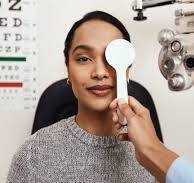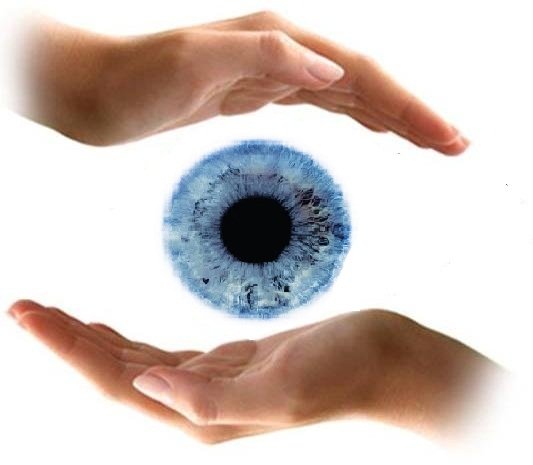Importance of Eye Care
Good vision is vital to overall well-being and quality of life. Prioritizing regular eye care can help maintain optimal vision, prevent eye diseases and detect any problems early for timely treatment.
Purpose of the Guide
The purpose of this guide is to provide comprehensive information on maintaining healthy eyes, understanding common eye conditions, and adopting good eye care practices at various stages of life.
Understanding the eye
A. Anatomy of the eye
The eye is a complex organ made up of different parts, each playing an important role in the visual process. These include the cornea, iris, lens, retina and optic nerve.
B. Common eye conditions
Refractive errors: Myopia (nearsightedness), hyperopia (farsightedness), and astigmatism are common refractive errors that affect vision.
Age-related eye conditions: Cataracts, glaucoma, and macular degeneration are some of the eye conditions that become more common with age.
Eye Infections and Diseases: Conjunctivitis (pink eye), keratitis and uveitis are examples of eye infections and diseases that require medical attention.

Maintaining healthy eyes
A. Regular eye exams:
Regular eye exams are important to maintain optimal eye care and detect any potential problems early. Adults should have comprehensive eye exams at least every two years or as recommended by an eye care professional.
B. Adequate nutrition for eye health:
A diet rich in nutrients such as vitamins A, C, E, and omega-3 fatty acids can support eye care and health. Foods like leafy vegetables, fish, nuts and citrus fruits are beneficial for the eyes.
C. Eye Protection:
Protecting the eyes from UV rays by wearing sunglasses and safety glasses in hazardous work environments can prevent eye damage. Sports fans should also prioritize eye care by wearing protective eyewear to prevent sports-related eye injuries.
D. Resting Your Eyes:
Taking breaks from screens, following the 20-20-20 rule (looking away from the screen at an object 20 feet away for 20 seconds every 20 minutes) and getting adequate sleep can help reduce eye strain and overall eye health. Can help promote care.

Eye Care for Different Age Groups
A. Infants and Children:
Early eye exams are important to detect any vision problems or eye conditions that may affect a child’s development. Signs of eye problems in children include frequent rubbing of the eyes, excessive tearing, and fluttering.
B. Adults:
Adults should be aware of age-related eye concerns such as presbyopia (difficulty focusing on near objects), dry eyes, and the increased risk of conditions such as cataracts and glaucoma with age.
C. Seniors:
Seniors are at increased risk of age-related eye diseases such as macular degeneration and diabetic retinopathy. Maintaining eye health in this age group requires regular eye exams and managing underlying health conditions such as diabetes and high blood pressure.

A. Proper Contact Lens Care:
Contact lens wearers should prioritize proper eye care to avoid infection and other complications. This includes following the recommended wearing schedule, cleaning and disinfecting lenses as directed, and replacing lenses on time. Additionally, it is important to remove the lenses before going to bed and avoid wearing them in water to reduce the risk of eye infection.
B. Eye Exercises:
Incorporating eye exercises into your daily routine can help reduce eye strain and maintain visual acuity. Simple exercises such as focusing on near and far objects, rolling the eyes in circular motions, and stretching the eyes can strengthen the eye muscles and improve overall eye health. These exercises are especially beneficial for people who spend long hours in front of screens.
Understanding Eye Health
The eye is an incredibly complex organ, consisting of many different interconnected structures vital to vision. From the cornea to the retina, each component plays an important role in receiving and processing visual information. Understanding the anatomy of the eye is fundamental to understanding how our vision works and the importance of maintaining its health.
Refractive errors, such as myopia, hyperopia, and astigmatism, are common conditions that can distort vision, necessitating corrective measures such as spectacles or contact lenses. Additionally, age-related eye conditions, such as presbyopia and cataracts, emphasize the importance of regular eye exams and active management to preserve vision.

Daily eye care practices
Although genetics influence eye health, lifestyle choices play an important role. Simple habits, including proper eye hygiene and a nutritious diet, can help protect long-term vision. Avoiding prolonged exposure to digital screens and implementing the 20-20-20 rule reduces digital eye strain and reduces the risk of developing computer vision syndrome.
Eye care for different age groups
Age sets unique eye care needs. Children may benefit from vision screening and safety glasses, while adults should prioritize regular eye exams to monitor for age-related conditions. Seniors at the highest risk of vision loss require comprehensive eye exams and active management of conditions such as glaucoma and macular degeneration.
Eye care for different age groups
Age sets unique eye care needs. Children may benefit from vision screening and safety glasses, while adults should prioritize regular eye exams to monitor for age-related conditions. Seniors at the highest risk of vision loss require comprehensive eye exams and active management of conditions such as glaucoma and macular degeneration.
General eye conditions
Refractive errors: These occur when the shape of the eye prevents light from focusing directly on the retina, resulting in blurred vision.
Myopia: Also known as nearsightedness, where distant objects appear blurry.
Hyperopia: This is also known as farsightedness, where things around can be blurry. Astigmatism: Irregular curvature of the cornea or lens, which impairs vision at and distance.

Eye care for different age groups
Age sets unique eye care needs. Children may benefit from vision screening and safety glasses, while adults should prioritize regular eye exams to monitor for age-related conditions. Seniors at the highest risk of vision loss require comprehensive eye exams and active management of conditions such as glaucoma and macular degeneration.
Eye infections and injuries, if left untreated, can cause significant vision loss. Early recognition of symptoms, such as conjunctivitis and keratitis, enables individuals to seek timely medical attention, reducing the likelihood of complications.






sss